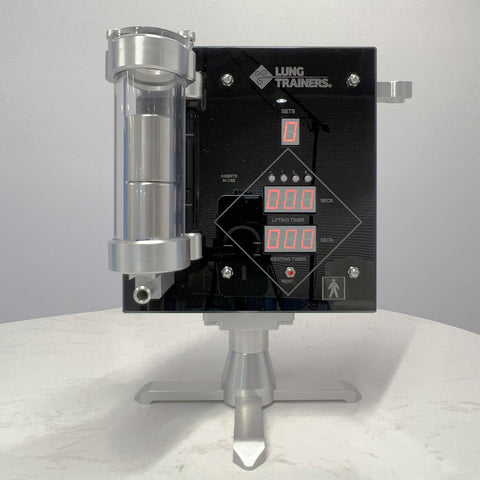Enhancing Asthma Management: How Breath Exercises and Breathing Training Devices
Asthma, a chronic respiratory condition, affects millions worldwide, leading to inflammation and narrowing of the airways that can make breathing challenging. Traditional treatments, like inhalers and medications, remain essential. However, complementary approaches like breath exercises for asthma and using a breathing training device are gaining popularity for their role in managing symptoms and improving lung function.

The Role of Breath Exercises in Asthma Management
Breath exercises can be a powerful way to manage asthma symptoms. They help strengthen respiratory muscles, increase lung capacity, and improve the overall efficiency of oxygen exchange. For individuals with asthma, this translates to fewer flare-ups, enhanced lung resilience, and potentially reduced reliance on medication over time.
One of the most effective breath exercises for asthma is diaphragmatic breathing, also known as belly breathing. This exercise involves deep inhalations that engage the diaphragm, allowing the lungs to expand fully. By focusing on breathing deeply into the belly rather than shallow breaths into the chest, asthma patients can increase oxygen intake and ease the burden on overworked respiratory muscles.
Another popular technique is the Buteyko breathing method, which emphasizes nasal breathing and controlled breaths. This exercise helps reduce hyperventilation, a common problem among those with asthma, and can calm the respiratory system, making it less reactive to asthma triggers.
These exercises not only aid in calming the mind but also improve the body’s response to stress, which is often a trigger for asthma symptoms. Consistently practicing these techniques can gradually build resilience, allowing individuals to better manage their symptoms during physical activity and daily life.
The Advantages of a Breathing Training Device
While breath exercises are beneficial, using a breathing training device can take lung training to the next level. These devices are specifically designed to improve lung strength, endurance, and efficiency by creating resistance during inhalation and exhalation. When breathing against resistance, respiratory muscles are forced to work harder, much like lifting weights to build muscle strength. Over time, this increased workload can improve lung function, making it easier to breathe during asthma flare-ups or physical exertion.
Breathing training devices vary in design and function but are typically compact, making them easy to incorporate into daily routines. By using a device for just a few minutes each day, asthma patients can enhance their respiratory strength, which may reduce the severity of symptoms over time. Additionally, these devices often include adjustable resistance settings, allowing users to gradually increase difficulty as their lung capacity improves.
Many devices also come with guided training programs, making it easier for beginners to start their lung training journey. With consistent use, these tools can complement regular breath exercises for asthma, offering a dual approach to managing the condition effectively.
A Holistic Approach to Asthma Management
For those looking to manage asthma more naturally, combining breath exercises with the use of a breathing training device offers a well-rounded approach. This combination not only strengthens the respiratory system but also promotes a sense of control over asthma symptoms, contributing to overall wellbeing.
In conclusion, breath exercises for asthma, supported by the use of a breathing training device, offer powerful tools for individuals looking to improve lung health and manage their condition more proactively. Visit lungtrainers.com for more information on breathing devices and exercises designed to enhance respiratory health for asthma management.
Source Url: - https://sites.google.com/view/lungtrainers98/home
Comments
Post a Comment